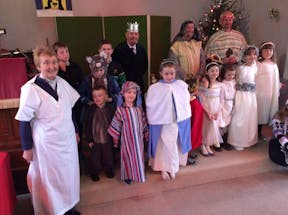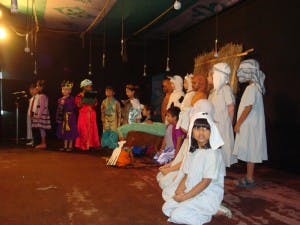Nativity Scripts Available
Click the buttons below for a brief page description about the nativity:
Children’s Nativity Story
Grandpa’s Nativity Story
Baby Jesus Came To Town.
Simplest Nativity Play......
The DIY Nativity Play.........
Alphabet Nativity Play....
Donkey’s Christmas Play
The Story Of Christmas
That Wonderful God-given First Christmas Day
Good News Nativity ...
Click on the scenarios below for specific guidance…
SCRIPTS WHICH INCLUDE MUSIC :
Click the Nativity Titles below to find out more…
IN A HURRY?
Click the orange button for a
QUICK AND EASY GUIDE: choose a script to suit your needs.
School Nativity Plays
Nativity Plays For School Groups
Best Children’s Nativity scripts are written entirely in rhyme, including the narration, with:
- lots of small speaking parts to make everyone feel special. The songs use
- simple, familiar tunes with purpose written words.
- Sheet music and FREE MP3 MUSIC FILES are included
Born out my own experience in schools and church, my nativity play scripts are
- Simple (The rhyming makes the script easily remembered)
- Inexpensive (from £9.95, and NO LICENCE FEE)
- Adaptable (can be used for a class, or a whole school. Includes optional parts and suggestions of adaptations according to size and ability of cast)
- Flexible (perfect if someone is ill or you need to make last minute changes)
- INSTANTLY DOWNLOADABLE (and available as a word document which you can personalise and alter as you choose.)
As a poet who loves rhyme and rhythm, I write my scripts entirely in rhyme, including the narration and speaking parts, and schools all over the world have agreed that this is what makes them so easy and so much fun for the children to learn.
SCRIPTS WITHOUT MUSIC
Click the Nativity play titles below to find out more…














